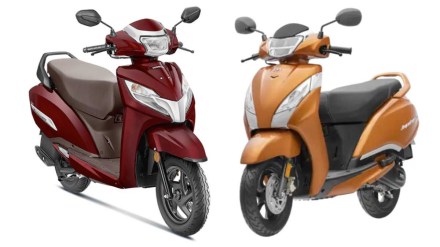When it made its much-hyped debut in the electric two-wheeler (e2W) space late last year, Honda Motorcycle & Scooter India (HMSI) announced it is expecting one-third of its overall sales to accrue from the segment by 2030. If morning shows the day, that grandiose announcement looks increasingly like a mirage.
Cautious strategy and its stagnant results
Roughly seven months after its foray into e2W – HMSI’s portfolio comprises Activa e and QC1 – the company has managed to sell only 15% or 1,662 units of its production as of July-end, according to Vahan data. That means a staggering 85% remain unsold at factories and dealerships. HMSI’s electric share is now less than 0.1% of its overall sales. In comparison, Bajaj, TVS, and Hero MotoCorp have EV contributions of 14%, 8%, and 1.6% respectively. Overall EV penetration in the two-wheeler market has already reached around 7%.
While HMSI didn’t respond to FE’s queries, HMSI President Tsutsumu Otani in a media interaction this July, termed the e2W strategy as a “patient” one and said it is taking a measured approach rather than rushing to flood the market with electric vehicles. The company is carefully studying the ownership experiences of early users to inform its long-term electric vehicle strategy. By analysing battery degradation patterns from its initial models, HMSI aims to refine its future electric vehicle roadmap.
Otani said “In India, internal combustion engine (ICE) vehicles are typically used for 10 to 15 years. However, maintaining an electric vehicle for a similar duration is challenging due to battery performance decline after 4 to 5 years. We are closely observing how customers respond once battery capacity starts to diminish—whether they opt to swap batteries, replace vehicles, or switch preferences altogether.”
But not many are convinced. Multiple dealers privately admit that Honda’s EV portfolio lacks corporate support, there have been no aggressive marketing campaigns, no clear sales targets, and underwhelming after-sales service. “It feels like Honda wants to be in EVs only because it has to, not because it wants to,” said one dealer. It’s clear HMSI has a lot of convincing to do so that its potential consumers do not run out of patience.
Key product shortcomings
“The products are priced at a premium, lack distinctiveness, and the absence of a home charging option (for Activa e) is hurting their appeal. This suggests that Honda, like many other Japanese automakers, isn’t fully committed to the EV transition,” said Puneet Gupta, director, S&P Global.
Gupta stated that Honda currently also lacks the technological capability and supply chain readiness for a full transition to EVs, and is unwilling to take a hit on profitability during the shift. He added that while GST cuts and Honda’s strong presence in the internal combustion engine (ICE) market may allow them to delay the transition slightly, the move to EVs is ultimately inevitable.
The Activa e, priced at ₹1,17,000, features a swappable battery but lacks a home charging option making it less appealing to cost-conscious buyers who prefer the convenience and savings of home charging. Its plans, which offers 40 km/day, costs around ₹2,000 (excluding GST), just ₹400 less than the monthly fuel cost of an ICE Activa with a 50 km/l average. Moreover, its limited launch in select cities like Bengaluru, Delhi, and Mumbai has restricted its accessibility and market reach.
The company did not share the total number of swapping stations to Fe, but a sector expert who has worked with the company, speaking on condition of anonymity, said there are fewer than 300 nationwide. Morever, with rivals like Vida offering home charging make Honda’s product less appealing.
While acknowledging that India will eventually transition from ICE to EVs, HMSI has pointed to existing bottlenecks in charging infrastructure and electricity supply, something industry watchers argue HMSI itself has done little to tackle.
The QC1, Honda’s more affordable EV priced at ₹90,000, is positioned as a no-frills urban runabout but is failing to generate interest. Originally targeted at gig workers, the segment now has rental options from low-speed EV operators and alternatives like Hero MotoCorp’s Battery-as-a-Service model, making the QC1 less appealing.
Honda’s competitors like TVS, Bajaj, and Hero MotoCorp have steadily built on the EV momentum, holding 23%, 23%, and 6% shares respectively in toHMSI tal EV sales in calendar year 2025. Pure EV players like Ola Electric have another 19%, followed by Ather Energy at 14% share, while the remaining 15% is split among smaller players.
HMSI has yet to finalise the location or investment for its dedicated EV-only plant, which it had planned for 2028. For now, both the Activa e and QC1 are assembled at the company’s Narasapura plant in Karnataka. “HMSI’s e2W will miss the bus if the company doesn’t get its act together – fast. The target is getting steeper by the day,: said a dealer.
